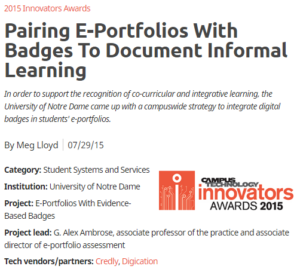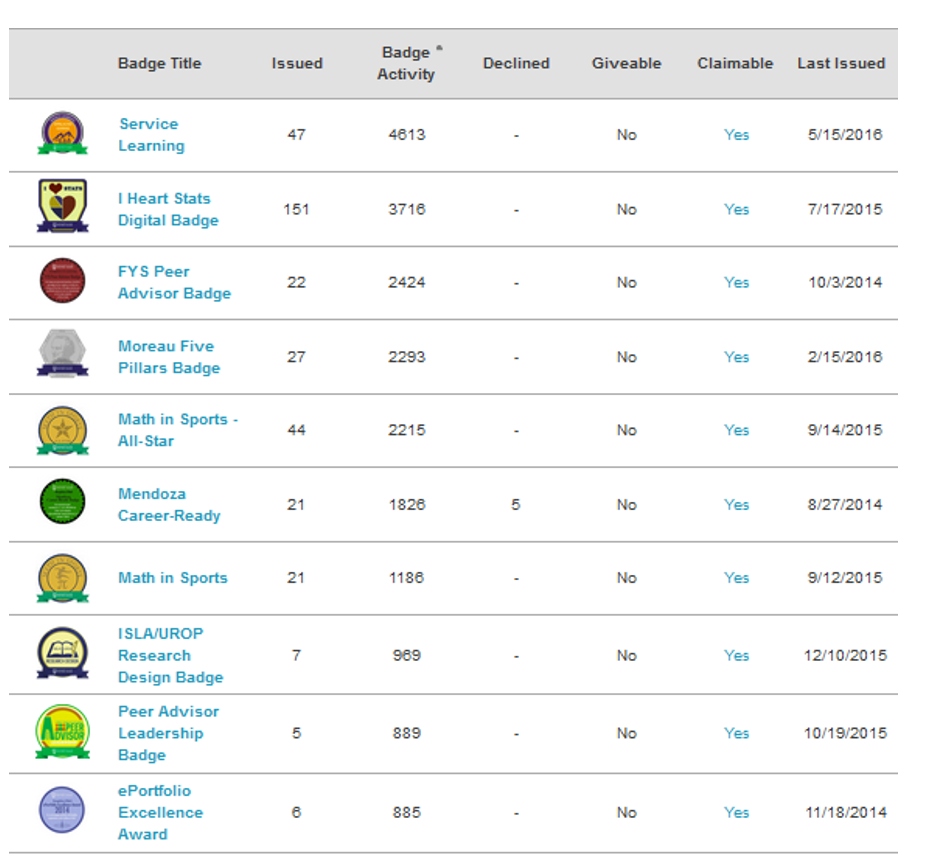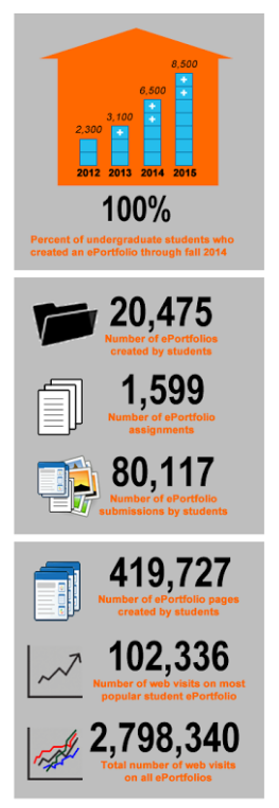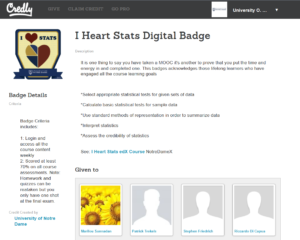Let me introduce you to Alaa. Alaa is a Syrian Architecture student at Damascus University. Last month she completed a Notre Dame Architecture edX Massive Open Online Course (MOOC) called The Meaning of Rome: The Renaissance and Baroque City.
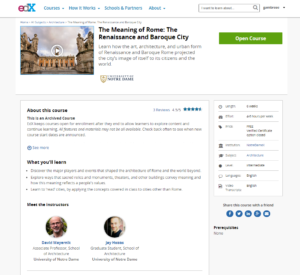
Click on image to zoom in.
This wasn’t your typical MOOC that culminated in a verified certificate (at cost). Notre Dame faculty, Office of Digital Learning course designers, and the Center for Teaching & Learning researchers designed this MOOC with an optional performance/project-based capstone challenge that gave students (who passed the edX course with a 70% or higher) the opportunity to build an ePortfolio that demonstrated skills and knowledge from the course. In essence, they offered a free opportunity for students to showcase their learning in a public, dynamic way. This was far more than your run of the mill watch videos and take a multiple choice quiz for a MOOC certificate. (To see the resource and the documentation website with the ePortfolio project description and details on how to get started–including a template–click here.) The campus ePortfolio group worked with engineers from Academic Technologies and Digication (our campus vendor) to build a first-in-kind seamless integration into the edX platform, giving all MOOC learners a free ePortfolio account that was connected to their edX profile. The MOOC learners then submitted their ePortfolios for Faculty & TA review through Digication’s back-end Assessment Management System. A rubric was used to evaluate the quality of the MOOC learner’s ePortfolio.
Back to Alaa. She was one of four MOOC learners that not only completed and passed the course but also received a passing rubric score that earned her a digital badge. See the screenshot below for the completed details of the badge, description, criteria, and list of earners.
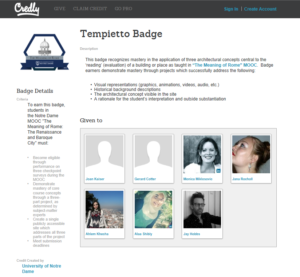
Click on image to see verified page in Credly
One of the first and most evident benefits of issuing badges to Credly profiles is that it begins to humanize the MOOC classmates by providing profile pics such as those seen above. Clicking deeper provides another level of significance. For example, when you click into Alaa’s pic, you can see the meta-data that is baked into and connected with the badge. Most importantly (and usually under-used) is the “evidence” field.
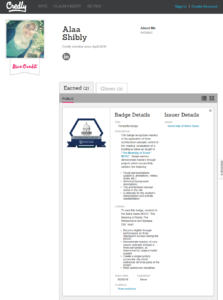
Click on image for a link to the verified page on Credly
When you click on Alaa’s evidence link it takes you to her public ePortfolio, which can viewed here. I encourage you to click around to see her evidence of what she gained from the MOOC. Below you will find some of my favorite snippets of her pictures, drawings, videos, and reflections.
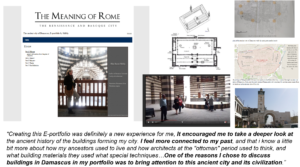
Click on image for a zoomed in view
While her country is being torn apart through a civil war from ISIS, Alaa states that she wants “to bring attention” to her ancient city. This is the potential of open evidence. The ePortfolio and the open badge empowered this young Syrian woman to use Notre Dame’s free Massive Open Online Course to demonstrate her interest in and competency with architectural analysis–using her city as her canvas. This is what open evidence of learning means: to be transparent, to give public visibility, to bring attention to Alaa and her skills through her city of Damascus. At the center of his is digital portfolios and badges. If paired right,they can unlock the power of evidence behind the open badge and optimize a student’s ability to collect an available body of projects and the process to make and prove a claim.
If Notre Dame didn’t offer this free Massive Open Online Course would Alaa have had this opportunity?
Could we have known or seen Alaa, her work, her story, her learning, her architectural analysis of her ancient city without the ePortfolio?
Would we have bubbled up Alaa from the thousands who enrolled in the course, hundreds who finished the course, the dozen who built an ePortfolio without the badge?
If you haven’t gotten enough here is a gallery of three more badged ePortfolios from the MOOC

Click on image for a zoomed in view
From St. Patrick’s Cathedral (NYC), Dublin (Ireland), and Salt Lake City (UT).



